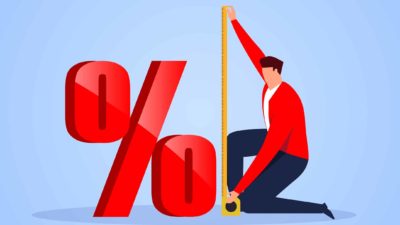The National Australia Bank Ltd. (ASX: NAB) is the latest to join the "three rate cut" club after its economists issued a statement predicting an extra rate cut in November this year, which will take the official cash rate to a new record low of 0.75%.
The news could be helping lift income stocks like those in the utilities and real estate sectors with the Spark Infrastructure Group (ASX: SKI) share price, Ausnet Services Ltd (ASX: AST) share price and Charter Hall Group (ASX: CHC) share price gain around 2% each in the last hour of trade.
But the lower rate prediction isn't doing much for the banking sector with the NAB share price and Westpac Banking Corp (ASX: WBC) leading the sector lower with a more than 1% loss each when the S&P/ASX 200 (Index:^AXJO) (ASX:XJO) index is up 0.1%.
Stuck in an interest rate downgrade cycle
That isn't surprising as lower rates will make the dividend payments from income stocks look more attractive while bank profits tend to get squeezed as rates fall.
What's more significant about NAB's revised forecast today is that it shows we are still in the midst of a "downgrade cycle" for interest rates. Every time economists have changed their rate forecasts, it's down and this trend is likely to continue.
We could soon see other economists join JP Morgan in predicting four cuts! JP Morgan is so far the only major institution I know of that is calling for such deep cuts.
This is a bad sign for our economy as it shows how worried the Reserve Bank of Australia is our economic outlook (assuming it does cut three or four times).
Is the next cut in July or August?
The next cut could come as soon as next month and yesterday's jobs data is adding to this view with the unemployment rate holding at 5.2% when the RBA has stated it wants it to drop to under 5%.
It won't get there without help, in my view, as most of the jobs created in May were part-time. Cuts in interest rates may not be enough and the pressure is growing on the federal government to inject some fiscal stimulus – starting with the doubling of the tax credit to lower- and middle-income taxpayers which was promised before the election.
The RBA could also pull unconventional levers, such as quantitative easing, to get the economy going, particularly if the banks don't pass on the full rate cuts to borrowers.
But a rate cut may not happen until August, according to NAB's economist Alan Oster. While the RBA should get on with cutting rates sooner rather than later given the weakening economy, there does seem to be a post-election boost to confidence and it is too early to assess if that has flowed into activity in any sustained way.
He further added that back-to-back rate cuts (the RBA cut rates this month for the first time in nearly three years) could send a strong signal that the economy has bigger problems than we thought – and the last thing the RBA wants to do is to scare consumers as that could make things worse.








